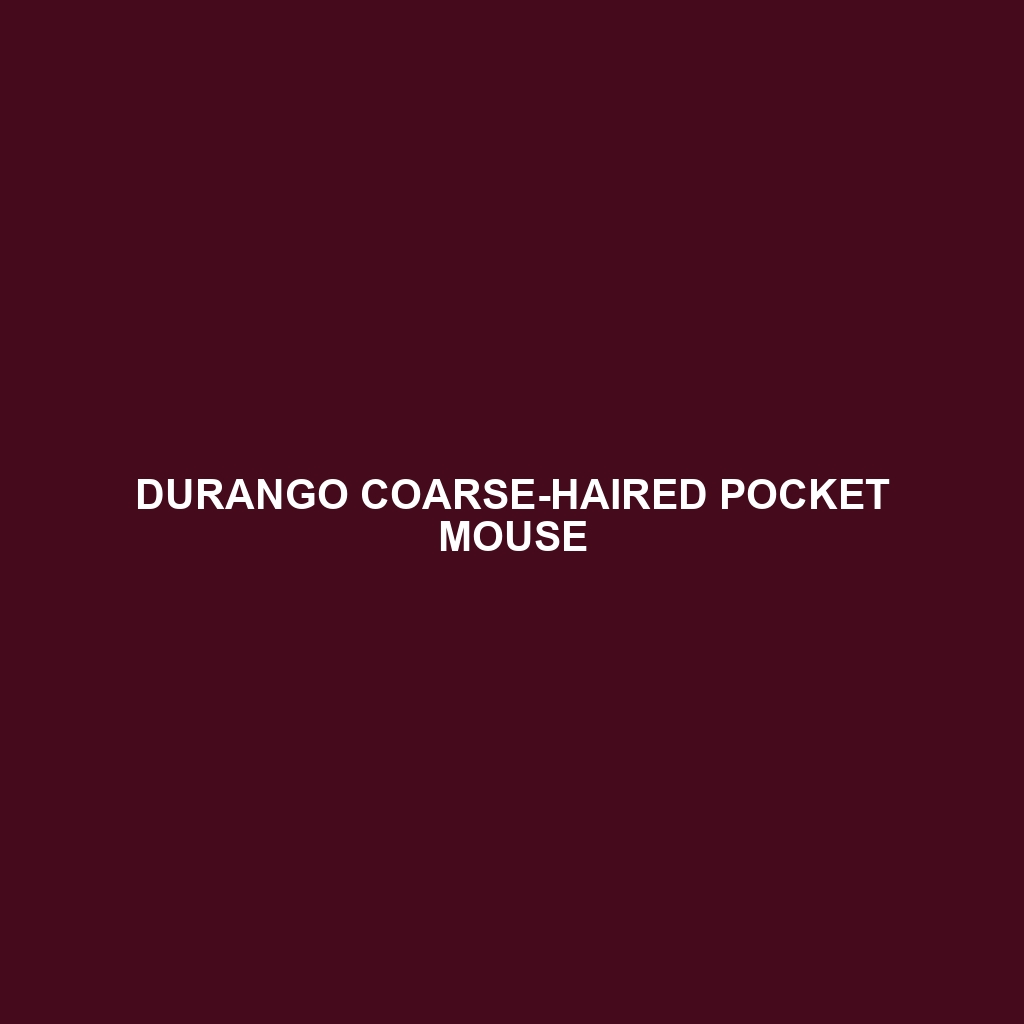Durango Coarse-haired Pocket Mouse: A Comprehensive Species Description
Common Name: Durango Coarse-haired Pocket Mouse
Scientific Name: Chaetodipus penicillatus
Habitat
The Durango Coarse-haired Pocket Mouse primarily inhabits the arid and semi-arid regions of southwestern United States and northern Mexico. Specifically, it is found in the mountainous areas and canyons of Durango, Mexico. This species thrives in environments characterized by shrublands, grasslands, and sandy soils, often favoring areas with sparse vegetation that offer sufficient cover and food sources.
Physical Characteristics
The Durango Coarse-haired Pocket Mouse is a small rodent, typically measuring around 8 to 10 inches in total length, including the tail. This species exhibits a distinctive coarse fur that ranges from light brown to gray, with a lighter underbelly. Notable features include large ears and prominent cheek pouches, which are characteristic of pocket mice. Its long, tufted tail aids in balance and makes it agile in its natural habitat.
Behavior
Durango Coarse-haired Pocket Mice are primarily nocturnal, displaying a range of behaviors that involve foraging for food during the night. They are known for their burrowing habits, constructing intricate tunnel systems that protect them from predators and harsh environmental conditions. Socially, these mice are generally solitary but may share burrows during the breeding season or in areas rich in food resources.
Diet
As omnivorous feeders, Durango Coarse-haired Pocket Mice consume a varied diet that mainly consists of seeds, fruits, and vegetation. They are particularly attracted to grasses and forbs, as well as insects when available. Their feeding habits contribute significantly to the dispersal of seeds, playing an essential role in the maintenance of their ecosystem.
Reproduction
The reproductive habits of the Durango Coarse-haired Pocket Mouse typically involve breeding from late spring to early fall. Females give birth to litters that generally consist of 2 to 5 offspring after a gestation period of about 25 days. Juveniles are weaned within a month and begin to forage independently shortly thereafter. Maternal care is essential during this delicate stage of development.
Conservation Status
Currently, the Durango Coarse-haired Pocket Mouse is classified as *data deficient* on the IUCN Red List. While specific population trends are unknown, habitat loss and degradation due to urban expansion and agriculture pose potential threats to its survival. Conservation efforts are necessary to monitor their populations and protect their natural habitats.
Interesting Facts
– The Durango Coarse-haired Pocket Mouse is known for its unique ability to store food in its cheek pouches, enabling it to transport seeds and other food sources back to its burrow.
– This species plays a vital role in its ecosystem by aiding in seed dispersal, which supports the growth of various plant species in its environment.
Role in Ecosystem
The Durango Coarse-haired Pocket Mouse serves as a crucial component of its ecosystem, acting as both a herbivore and a prey species for various predators. By foraging for seeds and fruits, they facilitate plant reproduction and contribute to the vitality of their habitat. Additionally, they are an important food source for larger mammals and birds of prey, highlighting their significance in maintaining ecological balance.
